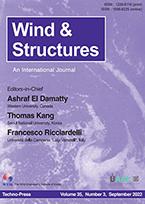Journal of Communication and Studies | RCL | nº 55 | 2021 | Habitual New Media
RCL
- URL: https://rcl.fcsh.unl.pt/index.php/rcl
- Call For Paper Type: Regular
- H2 Index: 0
- Submission Date: 2021-05-15
- Notification Date: 2021-06-30
- Final Version Date: 2021-09-01
RCL: Call for papers | “Habitual New Media”
Editors: Madalena Miranda (ICNOVA) and Ilo Alexandre (ICNOVA)
Deadline: May 15, 2021
“What it means when the media moves from the new to the habitual—when our bodies become archives of supposedly obsolescent media, streaming, updating, sharing, saving.”
Wendy Hui Kyong Chun, in ``Updating to Remain the Same (MIT Press, 2016), argues that our media “become more important when they appear to be of no importance - when they move from the 'new' to the ‘habitual’”. Technologies such as smartphones are no longer surprising to us, they have been absorbed into our lives in such a way that “we become our machines: we transmit “live”, update, capture, share, connect, save, delete and track”(from the introduction).
Chun interprets the incorporation of social networks in our habits as a defining concept of the present. “Networks have been central to the rise of neoliberalism, replacing 'society' with groups of individuals (...) Habit is central to the inversion of privacy and advertising that drives neoliberalism and networks”. It is in this field, for example, that Natalie Bookchin's artistic work expands individual expressions that embody this paradoxical intimate exposure in the visual digital flow.
The issue of "habitus", as a concept like in Pierre Bourdieu, places it in a more general social context, foreshadowing and consolidating the influence and complexity of the media in our lives, making them as omnipresent as almost involuntary. Roland Barthes, in the face of photography, in his idea of the invisibility of the signifier, also reveals a notion of “habit”. Pedro Miguel Frade in “As Figuras do Espanto” (ASA, 1992) reminds us of a moment when photography was still a technology that caused strangeness, where thinking “the modernity of the gaze” was also a “continuous and cumulative effect” (p.7) of what tends to remain obscure. Cultural technologies can be paradoxically surprising when viewed from the perspective of novelty or persistence.
The collective awareness of the political uses of new “habitual” technologies precipitated the first digital social movements of the 21st century ten years ago, such as the “Arab Springs”, “M12M” in Portugal, “Movimiento 15M” in Spain, or “Occupy WS Movement '' from New York, USA (Castells, 2013). Smartphones, “internet cafes'' connected with digital social networks spread tweets, images and videos on YouTube, based on participatory structures, making them political and destabilizing a global order with their protests. These movements surprised and liberated digital practices, as the reactivation of Ivan Illich's concept of “vernacular” (Illich, 1980), by Peter Snowdon in “The people is not an image - Vernacular Video after the Arab Springs” (Verso Books, 2020) that punctuated a moment in recent digitally mediated History. Since then, paradoxical digital lives have evolved and “habitual new media'' complexified.
However, with the pandemic moment, contemporary modes of existence have raised such mediations as globally evident. The weaknesses exposed in real and organic life now appear to be mediated in the coexistence, but also in communication and even in the hypothesis of contact, through digital existence and technological mediation of the “habitual new media”. In the context of the pandemic, “life on screen” becomes the canon of contemporary existence.
This number seeks to collect contributions on:
- “habitual new media” cultural mediations, focusing on the individual or the small collective, which relate to this perspective of digital intimacy in the contemporary;
- macro perspectives within the scope of Media Theories, on the relationship between progress and obsolescence of cultural technologies, or reflections on digital networks and their impact on the reproduction of control systems or the creation of resistance and solidarity movements;
- critical perspectives on the impact of the current pandemic context on cultural media and mediations, within the scope of Cultural Analytics. (Manovich, 2020).
- analysis of these themes in different segments and communities, particularly in minorities or vulnerable groups, and digital projects to overcome this context;
- historical perspectives on cultural media and their relationship with the concept of “habit” and progress, such as photography, cinema, sound technologies or others, and moments of tension “between medias”;
- artistic and creative practices that address these contexts, in visual arts, cinema but also sonic, multimedia or web art expressions;
- digital ethnographies under these themes, focusing on online experiences.
- recent perspectives of the different digital social movements of 2011, their mediations and their impacts, but also of recent digital social movements, anchored online, such as #metoo or #BLM, or #XR (Extinction Rebellion) and their digital practices or artivist expressions.
Articles can be written in English, French, Spanish or Portuguese and will be subjected to blind peer review. Visual essays will also be accepted. Formatting must be done in accordance with the journal’s submission guidelines and the submission via the OJS platform by May 15, 2021.
For inquiries, please contact editors Madalena Miranda: (miranda.madalena@gmail.com) or Ilo Alexandre (iloaguiar@gmail.com)
Guidelines for submission and instruction for authors:
Visual essays format:
Up to 12 pages. The essay can be entirely visual or combine image and text. The visual element of the essay must be an integral part of the argument or the ideas expressed and not serve as an example or illustration of them. It must also include an introductory text (150-300 words) integrated with the essay and its relevance in the context of this issue. Particular attention should be given to the layout of images/texts: the essay should include a PDF file with the suggested layout for 17 × 24.5cm and an image resolution of at least 300ppi.
(Useful information: https://catoolkit.herts.ac.uk/toolkit/the-visual-essay/)














